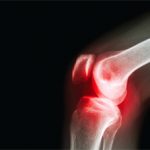
Among people with arthritis in the U.S., 36.2% are active, 22.6% are insufficiently active and 41.2% are inactive.
Likoper / SHUTTERSTOCK.COM
SAN DIEGO—Exercise, within limits imposed by an individual’s circumstances, is an almost universally beneficial medical therapy. In fact, Teresa J. Brady, PhD, senior behavioral scientist with the federal Centers for Disease Control and Prevention’s Arthritis Program, labeled it “medicine” in a session on exercise at the 2017 ACR/ARHP Annual Meeting Nov. 3–8.
Dr. Brady asked whether rheumatologists sufficiently appreciate the benefits of movement or take steps needed to help their patients get up off the couch, citing evidence that only 61% of people with arthritis say their providers have talked to them about exercise. A number of definitions and guidelines for activity exist, she said. Rheumatologists should become familiar with the guidelines and learn the evidence indicating what motivates patients with, for example, arthritis.
In 2008, the U.S. Department of Health and Human Services released physical activity guidelines for all adults, recommending at least 150 minutes per week of moderate-intensity aerobic activity or 75 minutes of vigorous aerobic activity, plus muscle strengthening of seven major muscle groups at least twice a week.1
A recent study of leisure time physical activity from the National Health Interview Survey data set found that among people with arthritis in the U.S., 36.2% are active, vs. 22.6% who are insufficiently active and 41.2% who are inactive. Only 13.7% met both the aerobic and strengthening standards. But rates of meeting the recommendations are up from 2008.2
How do we activate the inactive? It starts with learning from people with arthritis about what they fear and what they understand about the importance of mobility, Dr. Brady said. “They prefer the term ‘physical activity’ to ‘exercise,’ which sounds boring and like a chore.” Based on results from qualitative focus groups, they prefer self-directed physical activity that works for the individual and is convenient to their schedule. They also prefer specific instructions on physical activity.
Common barriers to physical activity include lack of time, competing priorities, fatigue, lack of enjoyment of the exercise and variable definitions of what is meant by physical activity. Arthritis-specific barriers include pain, fear of making the arthritis worse, uncertainty about how much is safe to do and lack of access to arthritis-specific programs.3
Overcoming Sedentary Behavior

Dr. Brady
Dr. Brady discussed how to get the biggest bang for the buck in promoting a healthier, active lifestyle for rheumatology patients. Some physical activity is better than none, even if it doesn’t meet the HHS standards. Even 45 minutes per week can improve or sustain physical function in RA patients, Dunlop et al found.4 Someone can meet the government guidelines, but if they spend the rest of the day sitting, it still has negative consequences for a number of medical conditions, including cardiovascular disease and diabetes.5

